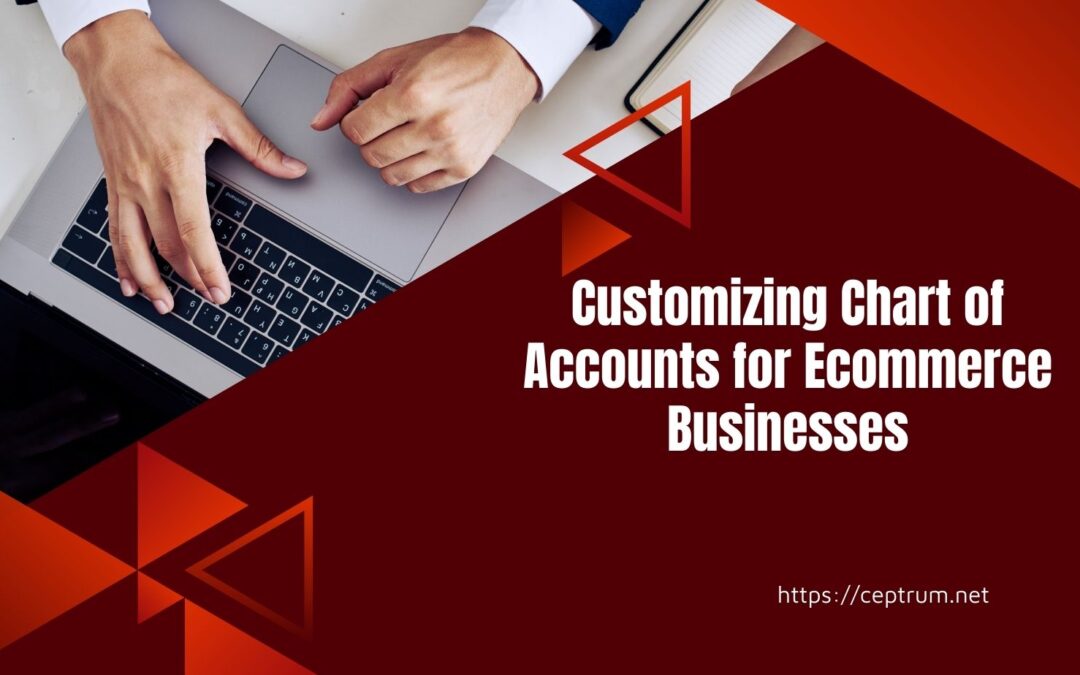Customizing Chart of Accounts for Ecommerce Businesses
An accurate and well-organized chart of accounts (COA) is the cornerstone of effective ecommerce accounting.A tailored COA is necessary for e-commerce enterprises due to the particular difficulties they face in handling revenue streams, inventory, expenses, and refunds. In addition to streamlining financial administration, a customized approach to the COA guarantees compliance, accurate reporting, and well-informed decision-making.
The fundamentals of creating a customized COA for e-commerce will be covered in this post. its benefits, and how professional services like Ceptrum can simplify the process.
What is a Chart of Accounts in Ecommerce Accounting?
All of the financial accounts in your general ledger are listed in an organized manner in the COA. Every account is associated with a certain kind of financial activity or transaction. A general COA might not be enough for e-commerce companies because of the intricacy of cross-border transactions, different payment gateways, and online sales.
By classifying accounts into categories like revenue, expenses, inventories, and liabilities, a customized COA for e-commerce takes care of these difficulties.
Why Customize the Chart of Accounts for Ecommerce?
- Tailored Financial Insights
A standard COA often lacks the granularity needed for ecommerce-specific transactions. Customization ensures clear tracking of sales, discounts, refunds, and fees from platforms like Shopify, Amazon, or Etsy. - Improved Tax Compliance
With multiple revenue streams and potential international operations, a customized COA helps categorize taxable and non-taxable transactions accurately. - Streamlined Ecommerce Bookkeeping
Automation tools work seamlessly with a customized COA, minimizing manual errors and improving efficiency in ecommerce bookkeeping. - Better Decision-Making
Detailed financial data allows ecommerce businesses to identify profitable products, control costs, and optimize inventory.
Key Components of a Customized Chart of Accounts for Ecommerce
1. Revenue Accounts
- Sales Revenue: Separate accounts for different sales channels (e.g., Shopify, Amazon).
- Discounts and Promotions: To track the impact of marketing campaigns.
- Returns and Refunds: Essential for accurate revenue reporting.
2. Expense Accounts
- Marketing Expenses: Google Ads, social media campaigns, and influencer collaborations.
- Platform Fees: Subscription or transaction fees for marketplaces.
- Shipping and Fulfillment Costs: Detailed categorization of logistics expenses.
3. Inventory Accounts
- Cost of Goods Sold (COGS): Tracks the cost of products sold.
- Inventory Adjustments: Records changes due to shrinkage or returns.
4. Payment Gateway Fees
- Track fees from PayPal, Stripe, and other payment processors separately.
5. Taxes
- Separate accounts for sales tax collected and remitted.
6. Liabilities
- Deferred Revenue: For pre-orders or subscription sales.
- Loan Payments: Categorized by principal and interest.
7. Equity Accounts
Track owner contributions, withdrawals, and retained earnings for accurate reporting of the company’s financial position.
Steps to Customize a Chart of Accounts for Ecommerce
1. Analyze Your Business Needs
Recognize your sources of income, modes of payment, and expenses. Define account categories that are pertinent to your e-commerce strategy with the use of this.
2. Employ Tools Particular to Your Industry
When used with e-commerce platforms, accounting software such as Xero or QuickBooks makes the process of creating and maintaining a COA easier.
3. Comply with the requirements for compliance
Verify that the COA complies with regional accounting and tax regulations. Businesses that operate internationally should think about regional tax compliance and currency translation.
4. Review and Update Frequently
Update your COA to reflect new goods, services, or distribution channels as your e-commerce company expands.
5. Seek Professional Assistance
Partnering with experts like Ceptrum ensures your COA is optimized for efficiency and compliance. Their tailored approach helps businesses achieve accurate reporting and streamlined bookkeeping.
How Ceptrum Can Help with Ecommerce Accounting
With a focus on e-commerce accounting, Ceptrum offers tailored solutions to satisfy the particular requirements of internet companies. Their areas of competence include of:
- Setting up and optimizing charts of accounts.
- Integration of accounting software with ecommerce platforms.
- Real-time financial insights and reporting.
- Tax compliance support for local and international operations.
Businesses can concentrate on expansion with Ceptrum, leaving the intricate bookkeeping and accounting tasks to the professionals.
Benefits of a Customized Chart of Accounts
- Accuracy in Financial Reporting
A customized COA ensures that all transactions are correctly categorized, reducing errors in financial statements. - Efficiency in Bookkeeping
Automation tools integrated with a tailored COA minimize manual tasks and improve productivity in ecommerce bookkeeping. - Compliance Assurance
Accurate tracking of tax liabilities and compliance with accounting standards reduces the risk of audits or penalties. - Informed Business Strategies
Granular financial insights enable ecommerce businesses to optimize pricing, inventory, and marketing efforts. - Scalability
As your business expands, a well-structured COA adapts to new products, markets, and revenue channels.
FAQs About Customizing COA for Ecommerce Businesses
1. Why is a customized chart of accounts essential for ecommerce businesses?
In order to ensure correct financial management, a customized COA addresses the particular requirements of e-commerce, including multi-channel income, platform fees, and intricate tax obligations.
2. Can I use standard accounting software for ecommerce bookkeeping?
Yes, but in order to meet certain e-commerce needs, customisation is required. QuickBooks and other tools can be customized to operate better.
3. How does a COA improve tax compliance?
By categorizing transactions accurately, a COA helps in tracking taxable and non-taxable income, ensuring compliance with local and international tax laws.
4. Should I hire a professional to set up my COA?
Working with experts like Ceptrum ensures your COA is optimized for accuracy, compliance, and efficiency, saving you time and resources.
5. How often should I update my chart of accounts?
Regular updates are essential to reflect business changes, such as new revenue channels, products, or operational costs.
Optimizing e-commerce accounting requires customizing a chart of accounts. Businesses can achieve financial reporting accuracy, operational efficiency, and strategic growth assistance with a customized COA. Your accounting procedures will be in line with corporate objectives and industry standards if you collaborate with seasoned experts like Ceptrum.
